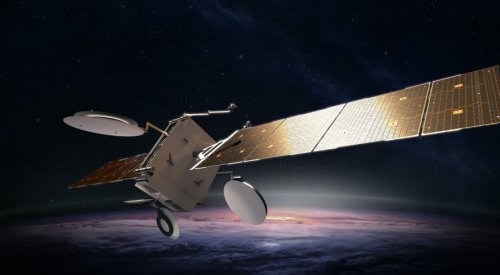Potential customers include partner countries of the U.S. government's WGS constellation.
WASHINGTON — Boeing is hoping to sign up international buyers for its new communications satellite bus aimed at the small geosynchronous market. At the 2019 International Astronautical Congress this week, the company will be pitching the Boeing 702x spacecraft to several potential customers, Eric Jensen, vice president of Boeing’s global commercial satellite sales, told SpaceNews.
“We have a team at IAC,” he said. “We’re going to engage customers on a national and commercial level.”
Boeing announced in September at Euroconsult’s annual World Satellite Business Week conference in Paris that it was introducing the 702x family of spacecraft to compete for what is expected to be a growing market for small geostationary orbit satellites. The 702x small GEO bus is based on the O3b mPower satellite Boeing is producing for SES’s medium-Earth orbit constellation of high-throughput satellites. Boeing combined its legacy 702 small and medium platforms with a newly designed digital payload.
In the weeks since the Euroconsult conference, “we have heard interest expressed from smaller governments,” Jensen said. The use of a digital, reprogrammable payload and the miniaturization of electronics has made it possible to pack the same capability of a 4,000-kilogram satellite into one half that size, he said. Boeing sees Airbus as its closest competitor in this segment of the market.
Jensen declined to name specific countries that have expressed interest in the 702x satellite. Some potential customers, he suggested, could be nations that currently are partners and users of the U.S. government’s Wideband Global Satcom (WGS) military constellation of geosynchronous orbit satellites. WGS partners include Canada, Denmark, Luxembourg, the Netherlands, New Zealand, Norway and the Czech Republic.
“They’re looking at this technology for bite-size versions that nations can use, re-purpose it for different missions,” said Jensen. A country would decide, for example, to split the capacity for government use and for commercial economic stimulus. A fully digital payload that can be reprogrammed makes this type of allocation relatively easy to do, he said. “People are thinking differently about how to use this.”
A spacecraft ordered today would be ready to launch in 2022, Jensen said. Boeing designed the satellite to be compatible with most launch vehicles. “We are working with all providers,” Jensen said.
The 702x can be launched as a primary or secondary payload. Three would fit on United Launch Alliance’s Vulcan Centaur, SpaceX’s Falcon 9 or Arianespace’s Ariane 6.
While there is a lot of marketing buzz about digital re-programmable, iPhone-like satellites, every one of these products is different, Jensen said. For the 702x spacecraft, Boeing designed the payload to make it easier for customers to change the satellite’s missions and re-purpose capacity.
Satellite operators, for example, could shift from offering TV broadcast to broadband internet services. They can also reallocate capacity as they see fit. “You can shape and form beams, put a lot of throughput to a given region so you don’t waste energy over places where you don’t have customers,” he said. “Old-school satellites can cover an entire country, but it’s hard to parse and distribute data.”
- Boeing unveils small GEO product as part of new 702X satellite lineup
- Boeing receives $605 million Air Force contract for WGS-11 communications satellite
- SES, with FCC’s blessing, says O3b constellation can reach global coverage
- Budget addition for WGS resets debate on the future of military space communications
- SES building a 10-terabit O3b ‘mPower’ constellation
Share with your friends

(0) Comments
This article comments are currently no :(